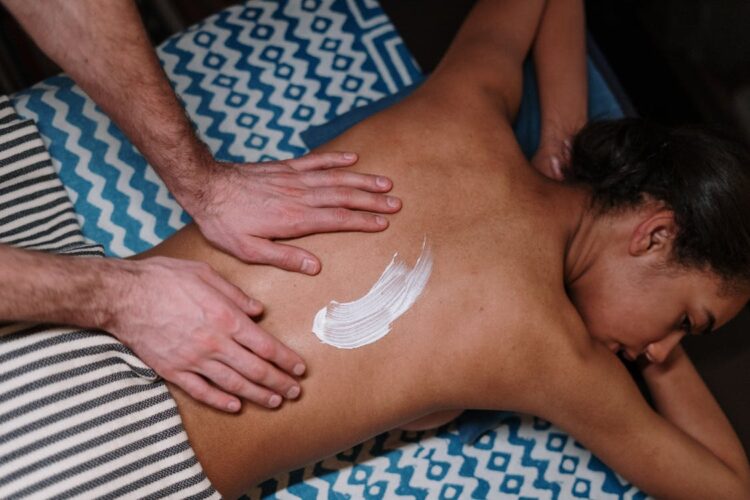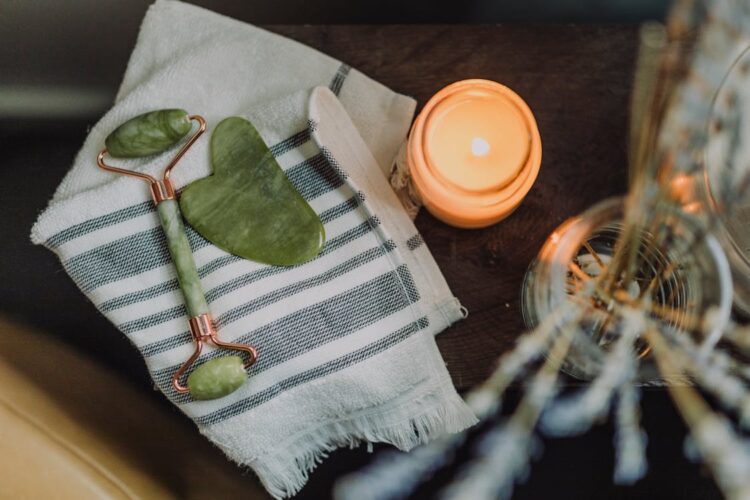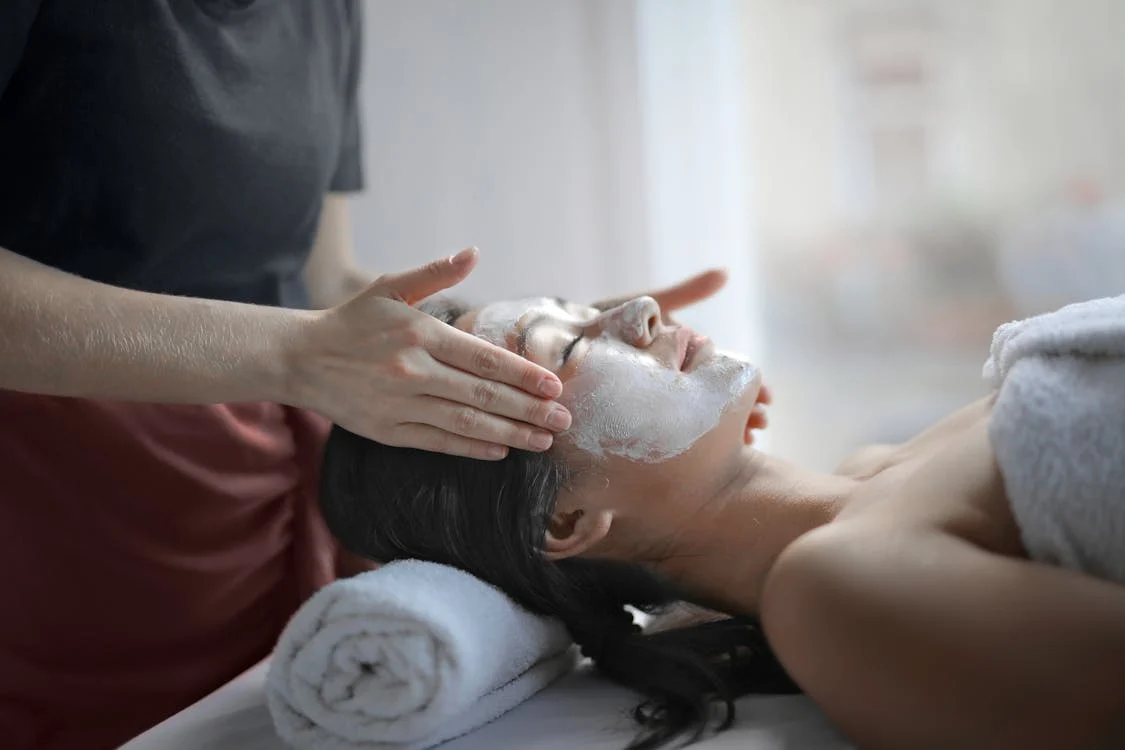Massage therapy is not just for pampering yourself at a spa. It’s an accessible and effective way to enhance your daily routine, providing benefits that extend far beyond relaxation. Whether you want to reduce stress, relieve muscle tension, or simply enjoy a moment of peace, massage can be a game-changer.
Table of Contents
Types of Massage to Consider

Before you start incorporating massage into your routine, it’s helpful to know the different types of massage available. Each type offers unique benefits, depending on your needs:
1. Swedish Massage
Swedish massage (스웨디시) is the most common type of massage therapy. It uses long, flowing strokes, kneading, and circular movements on superficial layers of muscle. This type is great for general relaxation and stress relief.
2. Deep Tissue
If you’re dealing with chronic muscle pain or injuries, deep tissue massage might be for you. It focuses on the deeper layers of muscle and connective tissue, using slower strokes and more intense pressure.
3. Sports Massage

Designed for athletes or active individuals, sports massages help prevent injuries, improves performance, and speeds up recovery after intense physical activity. It involves a combination of techniques, including stretching, deep tissue work, and even some joint manipulation.
4. Aromatherapy
This type combines the therapeutic benefits of massages with essential oils. The scents of these oils can enhance relaxation, reduce stress, and improve mood.
5. Hot Stone
In hot stone massages, smooth, heated stones are placed on specific points on the body, and are sometimes used by the therapist to perform the massages. The warmth helps relax tight muscles and improve circulation.
How to Incorporate Massages Into Your Routine

The next step is to figure out how to incorporate them into your daily or weekly routine. Here are some practical tips:
Start Small
You don’t need to book a full hour-long session to experience the benefits of massages. Start with shorter, more frequent sessions. Even a 15-minute chair massage can help reduce stress and tension.
Schedule Regular Sessions
Like any other wellness activity, consistency is key. Whether it’s once a week or once a month, try to schedule regular sessions. Treat it as a non-negotiable part of your self-care routine.
Mix and Match
Don’t feel limited to one type of massage. Mix and match different types depending on your needs. For example, you might enjoy a relaxing Swedish massage one week and a deep tissue the next if you’re feeling particularly sore.
DIY Techniques
If you don’t have time to visit a therapist regularly, consider learning some simple self-massage techniques. Tools like foam rollers, massage balls, or even just your hands can be effective for relieving tension in areas like your neck, shoulders, and back.
Combine Massages with Other Wellness Practices
Massage pairs well with other wellness practices like yoga, meditation, and stretching. For example, you might start or end your yoga session with a brief self-massage to enhance relaxation and flexibility.
Benefits of Massages: What You Can Expect

Incorporating massages into your wellness routine can lead to a range of benefits, both physical and mental.
- Reduced Stress and Anxiety: One of the most immediate benefits of massages is their ability to reduce stress and anxiety. The physical touch and focused attention can help calm your mind and body, leaving you feeling more relaxed and grounded.
- Better Posture: Regular massage can help improve your posture by addressing muscle imbalances that lead to poor alignment. This is especially important if you spend a lot of time sitting or standing in one position.
- Enhanced Flexibility: Massages can help loosen tight muscles and improve your range of motion, making it easier to move freely and prevent injuries.
- Improved Circulation: Massage stimulates blood flow, which helps deliver oxygen and nutrients to your muscles and organs. This can lead to faster recovery after exercise and an overall boost in energy levels.
- Pain Relief: If you suffer from chronic pain conditions like arthritis, fibromyalgia, or back pain, regular massages can provide significant relief. It helps reduce inflammation and alleviate tension in painful areas.
Making Massage a Habit

Incorporating massages into your wellness routine is a great step toward improving your overall health. But like any new habit, it takes time and consistency to see the full benefits. Here are some tips to help you make massages a regular part of your life:
- Set a Goal: Whether it’s reducing stress, improving flexibility, or relieving chronic pain, having a clear goal can help you stay motivated and track your progress.
- Create a Relaxing Space: If you’re doing self-massage at home, create a dedicated space where you can relax and focus on your practice. This could be a quiet corner of your bedroom or a spot in your living room with soothing lighting and calming scents.
- Pair Massages with Other Healthy Habits: Consider pairing your massage routine with other healthy habits, like drinking plenty of water, getting enough sleep, and eating a balanced diet. These practices complement each other and can enhance the overall benefits.
- Listen to Your Body: Pay attention to how your body feels after each massage. If certain techniques or areas of focus feel particularly beneficial, incorporate them more frequently into your routine.
- Make It Social: If you’re finding it hard to stick to a regular massage routine, consider making it a social activity. Invite a friend or partner to join you for a massage session or share tips and techniques.
Conclusion
Incorporating massage into your wellness routine isn’t just a short-term fix—it’s an investment in your long-term health and well-being. By making massage a regular part of your life, you can enjoy a host of benefits, from reduced stress and improved sleep to better posture and pain relief.
Remember, the key is consistency. Start small, make it enjoyable, and most importantly, listen to your body. Over time, you’ll likely find that massage becomes an essential part of your self-care toolkit, helping you feel more relaxed, balanced, and ready to take on whatever life throws your way.
